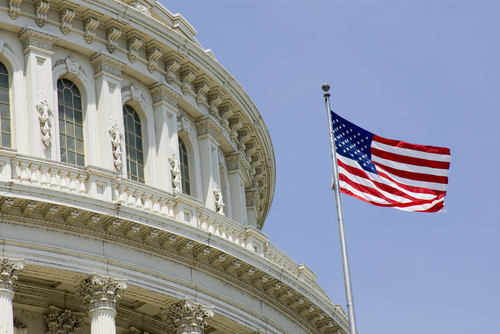Opening its doors for operations in July 2011, the Consumer Financial Protection Bureau (CFPB) has the distinction of being the first federal agency responsible for educating consumers, enforcing consumer-related regulations and observing financial markets for new risks. On April 6, 20011, the agency published its first CFPB Annual Report on Consumer Complaints. The CFPB has oversight responsibilities of mortgage firms, large depository banks, payday loan companies, credit bureaus, student loans and debt collection firms. The CFPB also has an Office of Older Americans that has the assignment of safeguarding the financial interest elderly consumers.
Complaint Process
The agency receives complaints through its website, telephone, fax mail email and referrals from government agencies. The director of the CFBP Richard Corday said that consumers can call a toll-free number (to third-party call centers), and file complaints in one of 187 languages. Calls center can handle calls from consumer with hearing or speech impairments.
- The CFBP screens complaint based on a set criteria.
- The agency send screened complaint to firm.
- Company’ reviews complaint, communicates with consumer and decide on response to complaint.
The CFBP Annual Report on Consumer Complaints contains data on the agency’s consumer response initiatives and the degree to which the CFBP has helped consumers resolve issues with financial services firms.
The agency recorded 13,210 consumer complaints, between July 21, 2011 and December 2011.
Complaints Received by CFPB
The CFPB officially started taking credit card complaints from consumers on July 21, 2011. On December 1, 2011, the consumer watchdog agency began logging mortgage complaints. On March 2012, the CFPB began accepting complaints regarding private student loans, bank products and services and various consumer loans. In late 2012, the CFPB intends to have the ability to receive complaints filed against non-depository financial institutions.
More than 30 percent of the 13,210 complaints received by the CFPB came from other government regulators.
The report has four sections: Credit Cards Companies, Mortgage complaints, Responses by Companies and Consumer Review of Companies’ Responses:
Credit Card Companies – More than 70 percent of the total complaints were associated with credit cards. Billing issues constituted 13.1 percent of the complaints, followed by identity theft – 10.9 percent, interest rates 10.2 and collection activities – 4.1 percent.
Mortgage Complaints – Of the 2,236 mortgage complaints received by the CFPB, most consumer grievances – 38.2 percent involved “the ability to pay.” Consumer issues with making their mortgage payments made up 21.8 percent and applying for mortgage products comprised 10.1 percent. The report note a “desire to seek agreement” on the part of consumers who file complaints.
Responses by Companies – Eighty-eight percent of the companies that received complaints from consumers responded to the inquiries. The companies closed 46.7 percent of the complaint without giving the consumer any “relief.” Companies still had 30.3 percent of the complaints under review and 18.6 percent of consumers received some type of relief. Some companies – 4.3 percent send administrative responses to consumers. The agency defines “relief” as “objective, measurable and verifiable monetary value to consumer,” because of the complaint.
Consumers’ Review of Companies’ Responses – Forty percent of consumers did not register disagreements with responses to their complaints. Nearly 13 percent of consumers disagreed with companies’ responses.
Summary
If a consumer disputes the company’s response, or a company fails to follow-up with a response, the CFPB initiates a review and investigation. The CFPB seeks to find out why a firm failed to respond or if the consumer has a legitimate reason for disputing a company’s response. The CFBP sends the consumer a summary of its investigation. Some complaints get forwarded to the agency’s Division of Supervision, Enforcement, and Fair Lending and Equal Opportunity for additional action. This first CFPB Annual Report on Consumer Complaints provides greater understanding of CFPB’s role and effectiveness as a watchdog to protect consumers.
Opening its doors for operations in July 2011, the Consumer Financial Protection Bureau (CFPB) has the distinction of being the first federal agency responsible for educating consumers, enforcing consumer-related regulations and observing financial markets for new risks. On April 6, 20011, the agency published its first CFPB Annual Report on Consumer Complaints. The CFPB has oversight responsibilities of mortgage firms, large depository banks, payday loan companies, credit bureaus, student loans and debt collection firms. The CFPB also has an Office of Older Americans that has the assignment of safeguarding the financial interest elderly consumers.
Complaint Process
The agency receives complaints through its website, telephone, fax mail email and referrals from government agencies. The director of the CFBP Richard Corday said that consumers can call a toll-free number (to third-party call centers), and file complaints in one of 187 languages. Calls center can handle calls from consumer with hearing or speech impairments.
- The CFBP screens complaint based on a set criteria.
- The agency send screened complaint to firm.
- Company’ reviews complaint, communicates with consumer and decide on response to complaint.
The CFBP Annual Report on Consumer Complaints contains data on the agency’s consumer response initiatives and the degree to which the CFBP has helped consumers resolve issues with financial services firms.
The agency recorded 13,210 consumer complaints, between July 21, 2011 and December 2011.
Complaints Received by CFPB
The CFPB officially started taking credit card complaints from consumers on July 21, 2011. On December 1, 2011, the consumer watchdog agency began logging mortgage complaints. On March 2012, the CFPB began accepting complaints regarding private student loans, bank products and services and various consumer loans. In late 2012, the CFPB intends to have the ability to receive complaints filed against non-depository financial institutions.
More than 30 percent of the 13,210 complaints received by the CFPB came from other government regulators.
The report has four sections: Credit Cards Companies, Mortgage complaints, Responses by Companies and Consumer Review of Companies’ Responses:
Credit Card Companies – More than 70 percent of the total complaints were associated with credit cards. Billing issues constituted 13.1 percent of the complaints, followed by identity theft – 10.9 percent, interest rates 10.2 and collection activities – 4.1 percent.
Mortgage Complaints – Of the 2,236 mortgage complaints received by the CFPB, most consumer grievances – 38.2 percent involved “the ability to pay.” Consumer issues with making their mortgage payments made up 21.8 percent and applying for mortgage products comprised 10.1 percent. The report note a “desire to seek agreement” on the part of consumers who file complaints.
Responses by Companies – Eighty-eight percent of the companies that received complaints from consumers responded to the inquiries. The companies closed 46.7 percent of the complaint without giving the consumer any “relief.” Companies still had 30.3 percent of the complaints under review and 18.6 percent of consumers received some type of relief. Some companies – 4.3 percent send administrative responses to consumers. The agency defines “relief” as “objective, measurable and verifiable monetary value to consumer,” because of the complaint.
Consumers’ Review of Companies’ Responses – Forty percent of consumers did not register disagreements with responses to their complaints. Nearly 13 percent of consumers disagreed with companies’ responses.
Summary
If a consumer disputes the company’s response, or a company fails to follow-up with a response, the CFPB initiates a review and investigation. The CFPB seeks to find out why a firm failed to respond or if the consumer has a legitimate reason for disputing a company’s response. The CFBP sends the consumer a summary of its investigation. Some complaints get forwarded to the agency’s Division of Supervision, Enforcement, and Fair Lending and Equal Opportunity for additional action. This first CFPB Annual Report on Consumer Complaints provides greater understanding of CFPB’s role and effectiveness as a watchdog to protect consumers.







